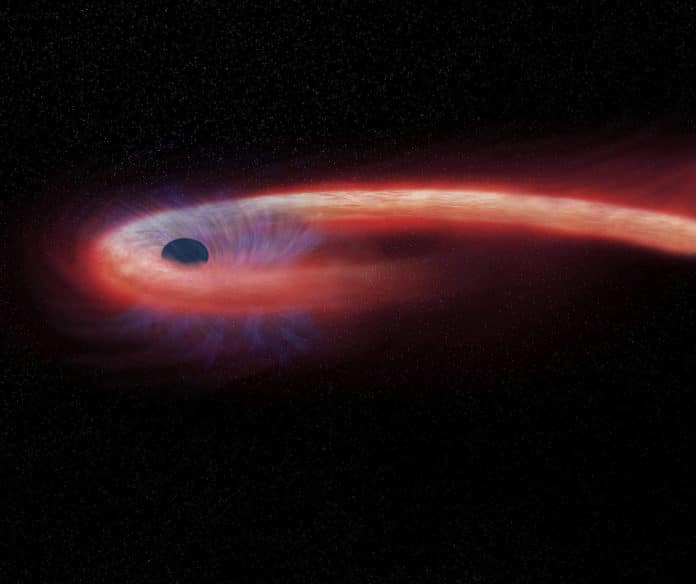The events at the end of a star’s life depend on its mass. Most stars in our universe die of natural causes. They either explode their external shells or cool down because of lack of fuel, or they can go out with a bang in a giant supernova explosion.
Sometimes, stars get torn into slim filaments by the supermassive black hole. The gravity of the black hole pulls one side of the star so much harder that it rips the star apart. This process is known as spaghettification or Tidal Disruption Event.
Once a star undergoes a spaghetti strand, it falls further into the black hole, emitting a short burst of radiation.
For decades, astronomers have been spotting these bursts, but they have never seen the actual material ligaments, as in a physical object that emits and blocks light.
For the first time, astronomers observed spectral absorption lines while looking at one of the poles of a black hole. They observed spectral absorption lines caused by strands of a spaghettified star.
Absorption lines above a black hole’s poll suggest a long strand wrapped many times all around the black hole, like a yarn ball: the actual material ligament from a freshly torn star.
Lead author Giacomo Cannizzaro (SRON/Radboud University) said, “Moreover, the absorption lines are narrow. The Doppler effect does not broaden them like you’d expect when you would be looking at a rotating disk.”
Journal Reference:
- G Cannizzaro et al. Accretion disc cooling and narrow absorption lines in the tidal disruption event AT 2019dsg, Monthly Notices of the Royal Astronomical Society (2021). DOI: 10.1093/mnras/stab851
